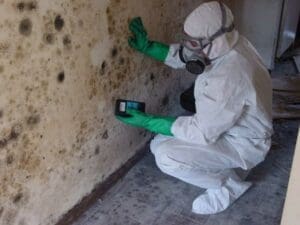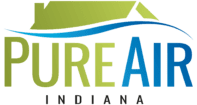Essential Tools and Techniques For Professional Mold Remediation
Professional mold remediators use different tools and techniques to get rid of mold in homes and businesses.
Common Tools Include:
- HEPA vacuums, they have special filters to trap mold spores
- Air scrubbers, clean the air.
- Containment barriers, keep mold from spreading.
- Desiccants, remove moisture
- Moldicides, are chemicals that kill mold.
The Process Professional Mold Remediators Use To Remove Mold:
Source Removal: Find and fix what is causing the mold, like leaky pipes or a broken roof.
Cleaning: Clean the mold from surfaces. Different surfaces need different cleaning methods.
Containment: Keep the mold from spreading by using containment barriers.
Air Filtration: After cleaning, use air scrubbers to clean the air of any remaining mold spores.
Post-Remediation Verification: A final inspection is done to ensure the mold is gone and won't return.
These steps help keep homes and businesses safe from mold problems. Here are 12 Signs You Need Mold Removal Services.
Equipment Professional Mold Remediators Use
Professional mold remediators use special equipment to remove mold from homes and businesses. The top tools they use are HEPA vacuums, air scrubbers, and containment barriers. HEPA vacuums are important because they have special filters that trap tiny mold spores. This prevents the spores from getting into the air and spreading to other places.
Air scrubbers are also key in mold remediation. They clean the air by capturing mold spores and other particles. This helps to make the air safe to breathe. Containment barriers are like big plastic walls. They keep the mold from spreading to other parts of the building.
Other important tools include desiccants and moldicides. Desiccants help remove moisture, which mold needs to grow. Moldicides are chemicals that kill mold spores. Together, these tools are essential for Mold remediation Indiana and other places. If you need help with mold, you can call experts who offer mold remediation services.
The Most Common Tools in Mold Remediation
Mold remediators use specific tools to get rid of mold. The most common tools in mold remediation are HEPA vacuums, air scrubbers, and containment barriers. HEPA vacuums have high-efficiency filters that trap mold spores and prevent them from spreading through the air. Air scrubbers work similarly but are designed to clean the air, removing mold spores and other particles.
Containment barriers are used to keep the mold from spreading to other parts of the building. These barriers are made of plastic sheeting and are taped to the walls and floors. This helps to contain the mold during the cleaning process. Here are some household items to remove mold from your home.
Other common tools include desiccants and moldicides. Desiccants absorb moisture from the air, which helps to stop mold from growing. Moldicides are chemicals that kill mold spores and prevent them from coming back.
Together, these tools play a crucial role in mold removal and restoration. They help keep buildings safe from mold damage.
Related: How To Get Rid Of Mold Smell From House?

Techniques Professionals Use to Remove Mold
Mold can be a problem in homes and businesses. To remove it, professionals use different techniques. First, they find the source of the moisture. Mold needs moisture to grow, so finding the leak or problem that caused the moisture is the first step. It could be a leaky pipe, a roof problem, or a broken window. Once they fix this, they can start removing the mold.
Professionals also clean the surfaces where mold grows. They use special cleaning solutions to scrub away the mold. They make sure to wear protective gear like gloves and masks to stay safe. Another technique is containment. They put up plastic barriers to keep mold spores from spreading while they work.
After cleaning, professionals use air scrubbers to filter out any mold spores left in the air. This helps to keep the air clean. They also check for hidden mold to ensure it's all gone. These are some of the techniques used by a mold professional Indiana and in other places to remove mold.

The Role of HEPA Vacuums in Mold Removal
HEPA vacuums play an important role in mold removal. HEPA stands for High-Efficiency Particulate Air. These vacuums have special filters that can trap tiny particles like mold spores. This is very important because mold spores can be harmful if they get into the air and people breathe them in.
When professionals use HEPA vacuums, they can clean up mold without spreading it. They use these vacuums to remove mold from floors, walls, and other surfaces. They also use them to clean up any dust or debris that comes from the mold removal process. The HEPA filter catches all the bad stuff, so it doesn't get into the air.
Another important use for HEPA vacuums is in air filtration. After the mold is removed, professionals use these vacuums to clean the air in the room. This helps make sure there are no mold spores left behind. It’s an essential tool for mold cleaning services Indiana and other places. If you need mold removed, HEPA vacuums are one of the best tools to use.
Related: What Do You Do If You Have Black Mold?
Related: How To Test Black Mold And How To Get Rid Of It?
How Air Scrubbers Help in Mold Remediation
Air scrubbers are important tools for mold remediation. They help keep the air clean by removing mold spores and other tiny particles. This is crucial because mold spores can float in the air and spread to other parts of a building. Air scrubbers work by pulling air through a series of filters that trap these particles, making the air safer to breathe.
When professionals use air scrubbers during mold removal, they set them up in the rooms where they are working. This keeps the mold spores from traveling to other areas. The air scrubber creates a cleaner environment for the workers and anyone who enters the space after the mold is removed.
After the mold is cleaned from surfaces, air scrubbers keep working to remove any remaining spores from the air. This step helps to make sure the mold doesn't come back. Air scrubbers are a key part of mold removal services. They help ensure the air is safe and clean after mold remediation is complete.
Related: What Health Risks Are Associated With Mold Exposure?
Using Desiccants to Prevent Mold Regrowth
Desiccants are useful tools to prevent mold regrowth. They work by absorbing moisture from the air. Mold needs moisture to grow, so keeping the air dry is key to stopping mold from coming back. That's why professionals often use desiccants after cleaning up mold. Desiccants can be in different forms. They include packets of silica gel and canisters with moisture-absorbing beads.
When a room has had a mold problem, a mold specialist might place desiccants in different areas to keep the moisture levels down. This is especially important in places where humidity is high, like basements or bathrooms. By using desiccants, the air stays dry, which helps prevent mold spores from finding a good place to grow.
A mold specialist Indiana often uses desiccants as part of their mold remediation process. They know that even after mold is cleaned, there could still be moisture in the air. Using desiccants helps ensure the mold doesn't return, keeping your home safe and dry.
Moldicides Chemicals That Kill Mold Spores
Moldicides are chemicals that kill mold spores. They are used in mold remediation to make sure the mold is gone for good. These chemicals can be sprayed or applied to surfaces where mold has been found. When moldicides are used, they kill not only the mold you can see but also the tiny spores that are invisible. This is important because if even a few spores are left, they can grow into a new mold.
Professionals who do mold remediation use moldicides to treat areas after they have removed the visible mold. They spray or wipe down the surfaces to ensure that all the spores are killed. This helps prevent mold from growing back.
Using moldicides requires caution because they are strong chemicals. Professionals wear protective gear like gloves and masks when they use them. If you think you have mold, it's best to call experts who do mold testing Indiana to find out if you need moldicides. This way, you can be sure your home is safe from mold.
Related: Should You Hire A Professional For Your Mold Remediation Needs?
Professionals Take These Steps To Ensure Mold Is Gone
When professionals remove mold, they follow specific steps to make sure it's completely gone. First, they do a thorough mold inspection and testing. This helps them find all the places where mold is growing and check the air for mold spores. It's important to know exactly where the mold is before they start the cleaning process. Here is a proper guide about what professionals use for mold remediation.
Next, they remove the source of moisture. Mold needs moisture to grow, so fixing leaks or improving ventilation is a crucial step. Once that's done, they clean the mold from surfaces. They might scrub it away, use special cleaning solutions, or even remove sections of walls or flooring if the mold is rooted.
After cleaning, they use containment barriers to keep mold spores from spreading. They also use air scrubbers to clean the air. Finally, professionals do a post-remediation check to make sure the mold is gone. They might do more mold inspection and testing to be sure there's no mold left behind.
These steps help ensure that the mold is removed and doesn't come back. If you think you have a mold problem, it's best to call experts who follow these steps.
Related: How To Get Rid Of Mold In House?


